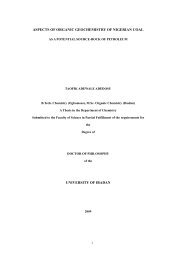aspects of organic geochemistry of nigerian coal university of ibadan
aspects of organic geochemistry of nigerian coal university of ibadan
aspects of organic geochemistry of nigerian coal university of ibadan
Create successful ePaper yourself
Turn your PDF publications into a flip-book with our unique Google optimized e-Paper software.
The short chain n-alkanes with odd-to-even predominance in the medium molecular<br />
weight region (C11-C17) maximizing at n-C16 are predominantly found in algae and<br />
microorganisms (Clark and Blummer, 1967; Fowler et al., 1986; Miranda et al., 1999;<br />
Ficken et al., 2000).<br />
The ratio <strong>of</strong> odd/even carbon numbered n-alkanes has been in use over a long<br />
period in estimating the thermal maturity <strong>of</strong> fossil fuels (Bray and Evans; 1961;<br />
Philippi, 1965; Scalan and Smith, 1970; Tissot et al., 1977). These ratios can be<br />
expressed as Carbon preference index, CPI (Bray and Evans, 1961) and improved<br />
Odd-to-even predominance, OEP (Scalan and Smith, 1970). The CPI and OEP values<br />
above or below 1.0 indicate low thermal maturity. Values <strong>of</strong> 1.0 suggest, but do not<br />
prove, that an oil or rock extract is thermally mature. The CPI or OEP values below<br />
1.0 are unusual and typify low maturity oils or bitumen from carbonate or hypersaline<br />
environments (Peters et al., 2005). Organic matter inputs do affect these ratios and<br />
therefore are mostly applied with caution.<br />
2.1.2 Acyclic isoprenoids<br />
Acyclic isoprenoids have been widely used in fossil fuel studies for<br />
characterization and correlation studies and to obtain information on depositional<br />
environment especially in lacustrine source rocks. The acyclic isoprenoids<br />
hydrocarbons; pristane, (Pr)(structure I) and phytane, (Ph)(structure II) are ubiquitous<br />
in sedimentary rocks, crude oils and <strong>coal</strong>s (Bechtel et al., 2003). The most abundant<br />
source <strong>of</strong> pristane and phytane is the phytol side chain <strong>of</strong> chlorophyll a and b (Powell<br />
and McKirdy, 1973). In the presence <strong>of</strong> Oxygen, phytol would be oxidized to phytenic<br />
acid, yielding pristane after decarboxylation. In the absence <strong>of</strong> Oxygen, phytol would<br />
be dehydrated, yielding phytadienes, which eventually hydrogenated to phytane. The<br />
Pr/Ph ratios have been proposed as an indicator for the oxicity <strong>of</strong> the depositional<br />
environment (Powell and McKirdy, 1973; Didyk et al., 1978). Pristane/phytane ratio<br />


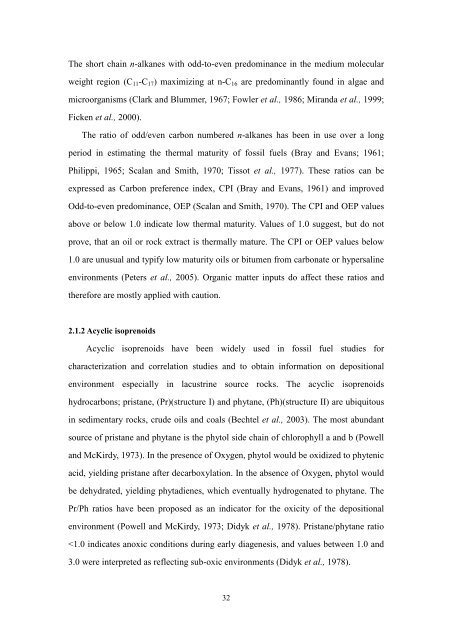

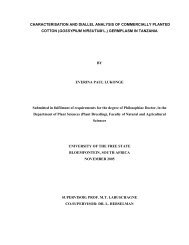


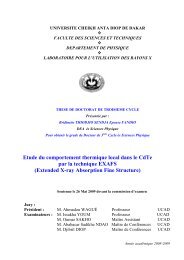



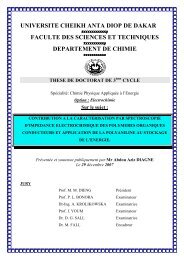
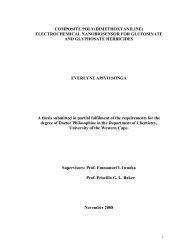


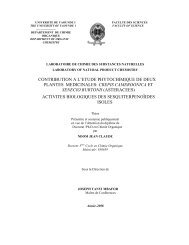
![SYNTHESIS AND ANTI-HIV ACTIVITY OF [d4U]-SPACER-[HI-236 ...](https://img.yumpu.com/30883288/1/190x245/synthesis-and-anti-hiv-activity-of-d4u-spacer-hi-236-.jpg?quality=85)
